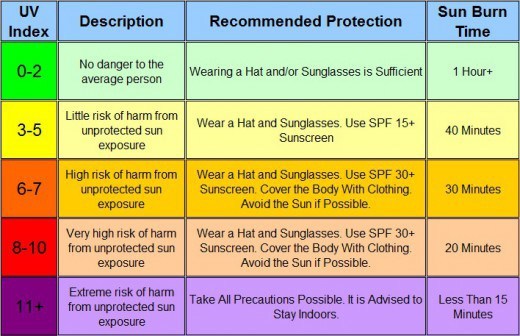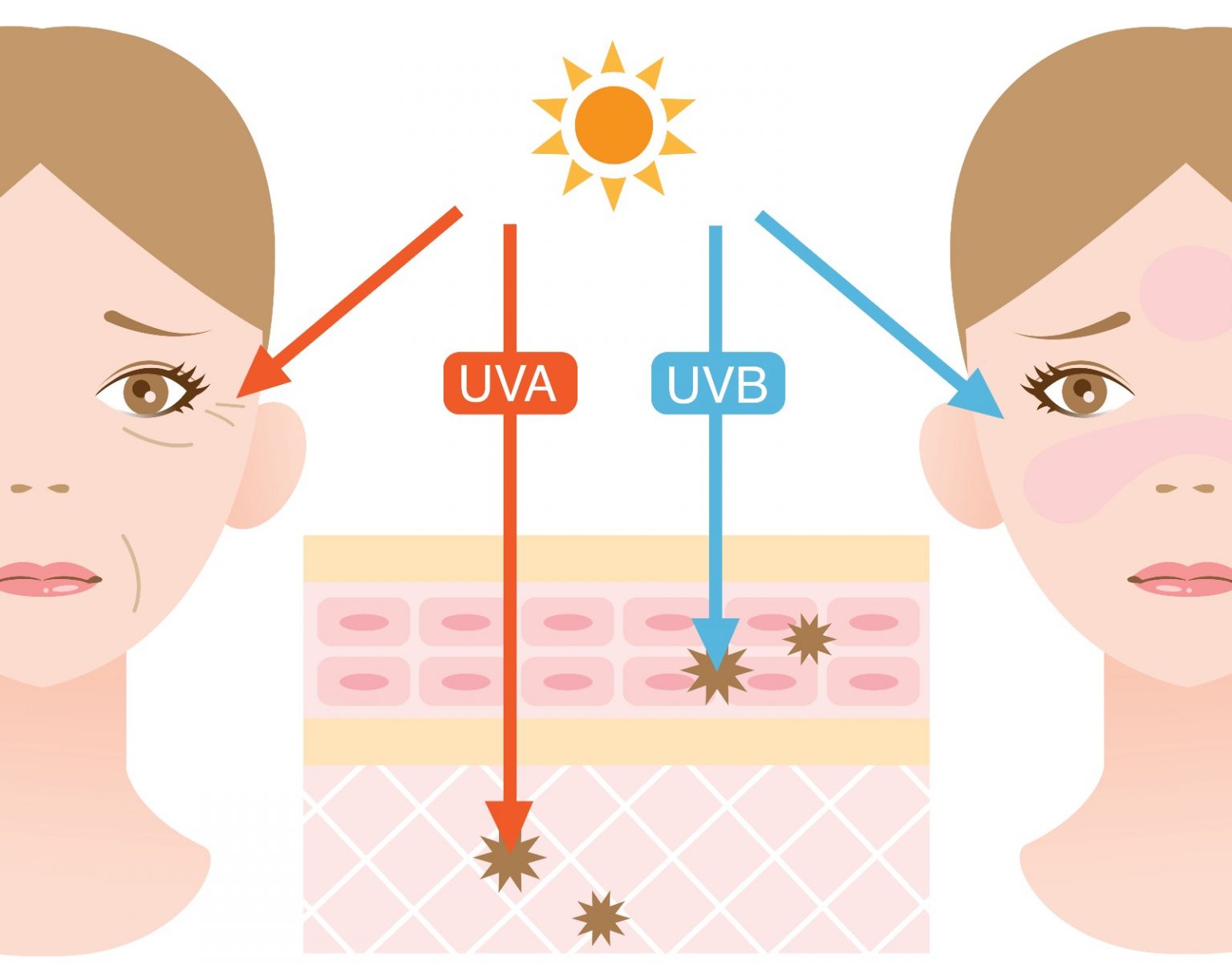Sun Protection 101: Protect Your Skin from the Sun
 Ever wonder how strong the sunlight in Malaysia is?
Ever wonder how strong the sunlight in Malaysia is?
Putting aside the scorching temperature and blinding brightness, there’s something within Malaysia’s sunlight that is more worrying – Ultraviolet radiation (UV). According to the Who Health Organisation (WHO) INTERSUN program, the level of UV radiation can be measured using UV Index such as below:

And unsurprisingly, Malaysia in general is usually exposed under UV index 9 to 11+ most of the time all year round.
You may wonder what’s the big deal about UV radiation.
To understand that we’ll need to look into the types of UV radiation that we are commonly exposed to in the atmosphere – UVA and UVB.

Up to 95% of the UV radiation that reaches Earth’s surface is UVA. UVA rays are much more prevalent on Earth and are always present regardless of season or time of day due to its longer wavelength giving it the ability to penetrate through clouds and glass. Although they are less intense than UVB, UVA can penetrate the skin more deeply and cause skin aging and wrinkling. Exposing to UVA also leads to injury in the DNA of the skin. In order to prevent further DNA damage, the skin darkens, causing skin tanning. Even though UVA does not cause significant damage to the epidermis, the outermost layer of skin where most skin cancers occur, they do still bring damage to a deeper layer of the epidermis and thus still contribute to and may initiate skin cancer to develop.
UVB on the other hand is known to be the main reason our skin reddens and gets sunburn when exposed to sunlight for too long. Because of their shorter wavelength, they can only reach and damage the more superficial layer of the epidermis, but they play a big role in the development of skin cancer. UVB intensity varies throughout the day and usually is most intense between 11.00 am to 3.00 pm in Malaysia. UVB does not pass through glass significantly, but it can be reflected and bounce back on a reflective surface, hitting your skin twice.
So to summarise:
| UVA | UVB |
| Cause skin aging, wrinkling and darkening | Cause skin redness and sunburn |
| Present all daylight with equal intensity | Strength varies on time of day |
| Can penetrate glass and cloud | Cannot penetrate glass |
| Contribute to skin cancer of deeper layer | Contribute to skin cancer of superficial layer |
| Shield by PA+ | Shield by SPF |

So how do we protect ourselves from the harm of UV rays?
One way is to apply sunscreen or sunblock. To evaluate how effective the sunscreen is, you can look at its Sun Protection Factor (SPF). The SPF value of a sunscreen indicates how much longer it will take for your skin to redden and get sunburnt by UVB rays when the sunscreen is applied, compared to when you do not apply any sunscreen. If you usually get sunburnt within 10 minutes under the sun when not applying sunscreen, applying a sunscreen with SP15 will delay the time till sunburnt to 15 times longer. So now your skin takes 150 minutes to get sunburnt.
Some of you may think: What if I want to prevent my skin from darkening because of sunlight exposure? Then you should be checking out the PA value of the sunscreen. Basically, the more + is added to the back of PA, the better the protection against UVA.
• PA+ = Some UVA protection.
• PA++ = Moderate UVA protection.
• PA+++ = High UVA protection.
• PA++++ = Extremely High UVA protection.
Since we want to reduce the damage of both UVA and UVB, it is always better to look for broad-spectrum sunscreen and provides protection towards both types of UV rays.
Here we recommend you always use a broad-spectrum sunscreen with at least SPF 15 for daily activity. However, for extended outdoor activities, at least SPF 30 sunscreen should be applied. Keep in mind that sunscreens will start to lose effectiveness over time regardless of its SPF value, so it is important to reapply them every 2 hours. If you are going for a swim or activities that will cause heavy sweating, choose a sunscreen that indicates water-resistant or sweat resistant. Water-resistant sunscreen will remain effective for 40 minutes when swimming while sweat-resistant sunscreen will last 80 minutes when sweating. There is no “waterproof” or “sweatproof” sunscreen so you will still need to reapply the sunscreen frequently. In order to let sunscreen function properly, always apply it 30 minutes before going out.
| UPF Rating | Protection Category | Effective UV Transmission (%) |
| 15, 20 | Good | 6.7-4.2 |
| 25, 30, 35 | Very Good | 4.1-2.6 |
| 40, 45, 50, 50+ | Excellent | Less than 2.5 |
Apart from using sunscreen, you can protect yourself from UV rays by wearing clothing with UV cutting properties. Look for clothes with higher UPF (Ultraviolet Protection Factor). The higher the UPF, the less UV can penetrate through the clothing. Clothing with a UPF rating of 30 will allow only 1/30th (about 3 percent) of UV to pass through it and the UPF rating of 50 will only let 2 percent of UV to penetrate.
Even if you are unable to find clothes that claim to have UPF, you can choose to wear more tightly-woven but loose-fitting clothing as they provide more barrier between your skin and the sun. Clothes made from mixture or fully heavyweight natural fabrics like cotton, linen and light synthetic fabrics like polyester, nylon and spandex are some of the good choices. Wearing darker and more vibrant colour clothing will also absorb more UV and prevent them from reflecting other parts of your body when compared to clothing with pale colours. Remember clothes will also start to stretch and lose their colour after being worn and washed for some time, and therefore loses some of its sun-protective effects. So I guess that gives us more reason to buy new clothes once in a while.

Even with the above precautions taken, it is still best to stay in the shade as much as possible when going out. Wearing UV-blocking sunglasses and wide-brimmed hats helps too.
Hopefully, with this, you will be able to protect yourself from the damage of UV better in the future. Stay healthy, stay safe!





